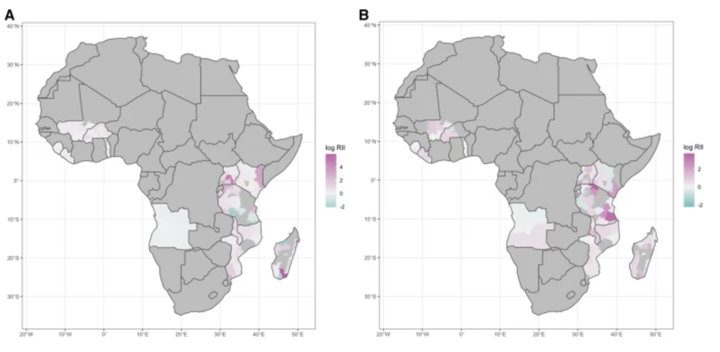
Abstract
Despite reductions in malaria incidence and mortality across Sub-Saharan (SSA) countries, malaria control and elimination efforts are currently facing multiple global challenges such as climate and land use change, invasive vectors, and disruptions in healthcare delivery. Although relationships between malaria risks and socioeconomic factors have been widely demonstrated, the strengths and variability of these associations have not been quantified across SSA. In this study, we used data from population-based malaria indicator surveys in SSA countries to assess spatial trends in relative and absolute socioeconomic inequalities, analyzed as social (mothers’ highest educational level—MHEL) and economic (wealth index—WI) inequalities in malaria prevalence. To capture spatial variations in socioeconomic (represented by both WI and MHEL) inequalities in malaria, we calculated both the Slope Index of Inequality (SII) and Relative Index of Inequality (RII) in each administrative region. We also conducted cluster analyses based on Local Indicator of Spatial Association (LISA) to consider the spatial auto-correlation in SII and RII across regions and countries. A total of 47,404 participants in 1874 Primary Sampling Units (PSU) were analyzed across the 13 SSA countries. Our multi-country assessment provides estimations of strong socioeconomic inequalities between and within SSA countries. Such within- and between- countries inequalities varied greatly according to the socioeconomic metric and the scale used. Countries located in Eastern Africa showed a higher median Slope Index of Inequality (SII) and Relative Index of Inequality (RII) in malaria prevalence relative to WI in comparison to countries in other locations across SSA. Pockets of high SII in malaria prevalence in relation to WI and MHEL were observed in the East part of Africa. This study was able to map this wide range of malaria inequality metrics at a very local scale and highlighted the spatial clustering patterns of pockets of high and low malaria inequality values.